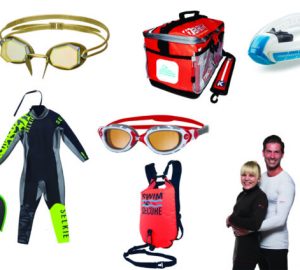How to prolong the life of your open water swimming wetsuit
With open water swimming wetsuits, there are trade-offs. That thin and flexible neoprene you want around the shoulders is a potential weakness; the lovely sleek go-faster coating is easily damaged. As a wetsuit can be a significant financial investment, presumably you want it to last. It therefore needs some TLC. Here are our tips to keep your wetsuit in top condition.
- Before first use, unpack your wetsuit carefully and check it all over. It is unlikely that a new wetsuit will be damaged but, if it is, it’s better to spot any flaws before you use it or need it for an event.
- If you have to hang your wetsuit, use a hanger with a horizontal bar and gently fold the wetsuit over the bar at the waist. Hanging a wetsuit by the shoulders can stretch and damage the delicate neoprene in that area. Alternatively, store your wetsuit flat (e.g. under your bed).
- Store and transport your wetsuit inside out to protect the outer skin.
- Take your time to put on your wetsuit. It’s easy to cause damage by tugging impatiently or if you have sharp nails. You can wear gloves and socks for extra protection (these also make it easy to slip on the wetsuit).
- It’s better for your suit if you can get a friend to zip you up, rather than tugging on the zip cord.
- Use a wetsuit-approved anti-chafe lotion. Petroleum-based lubricants such as Vaseline may damage the neoprene (although many people use them).
- Avoid sitting on rough surfaces in your wetsuit and take care entering and leaving the water as it’s easy to damage a wetsuit on sharp rocks.
- If you’re taking part in a triathlon, decide for yourself whether it’s worth saving those extra few seconds by stamping your wetsuit into the dirt to take it off quicker.
- Try to take your wetsuit off promptly after swimming as it comes off more easily when wet. Letting some water into the suit just before you get out can help.
- Ease your wetsuit off gently by turning it inside out. Preferably stand on a towel or other soft and clean surface.
- If available, rinse your wetsuit immediately after use in clean, fresh water. If you can’t, you should wash your wetsuit at the first opportunity.
- Air dry your wetsuit as soon as you can but keep it out of direct sunlight. The sun’s UV rays damage the neoprene and weaken your wetsuit seams. One option would be to use a Dry Bag* which simultaneously dries and protects your wetsuit.
- Wash your wetsuit occasionally with specialist wetsuit shampoo.
Common wetsuit mistakes
- Arriving late for your swim session and event and trying to put your wetsuit on too quickly.
- Aggressive tugging of the material around the shoulders or arms in an attempt to improve fit (take your time and get a friend to help instead).
- Not bringing a separate bag for your wetsuit post swim and packing it with all the things you want to keep dry instead.
- Crumpling your wet wetsuit in a bag and forgetting about it for three days.
- Not drying it fully after use! It’s important to dry your suit fully to reduce the risk of transferring aquatic alien species to a new location.

*This article is sponsored by the makers of Dry Bag. Dry Bag is a 130cm long bag complete with wetsuit hanger and water reservoir at the base which collects any water that drips off your wetsuit. Mesh vents will let air circulate around your wetsuit to help it dry while 300 denier showerproof material will protect it from ripping while on the go and the sun’s UV rays if left outside to dry. The durable wetsuit hanger can take a drop weight of 25kg, with a wide arm that means you can hang your wetsuit at the waist and not worry about the shoulders stretching. Furthermore, you can hang your wetsuit in a Dry Bag straight after your swim and it will start drying while you fill up on coffee. When you get home, you don’t need to handle your soggy wetsuit again. Simply hang up the Dry Bag wherever is convenient. Your wetsuit can stay in the Dry Bag until your next swim. Dry Bag costs £60 and could save you a small fortune in wetsuit repairs and renewals.
Find out more: thedrybag.co.uk








